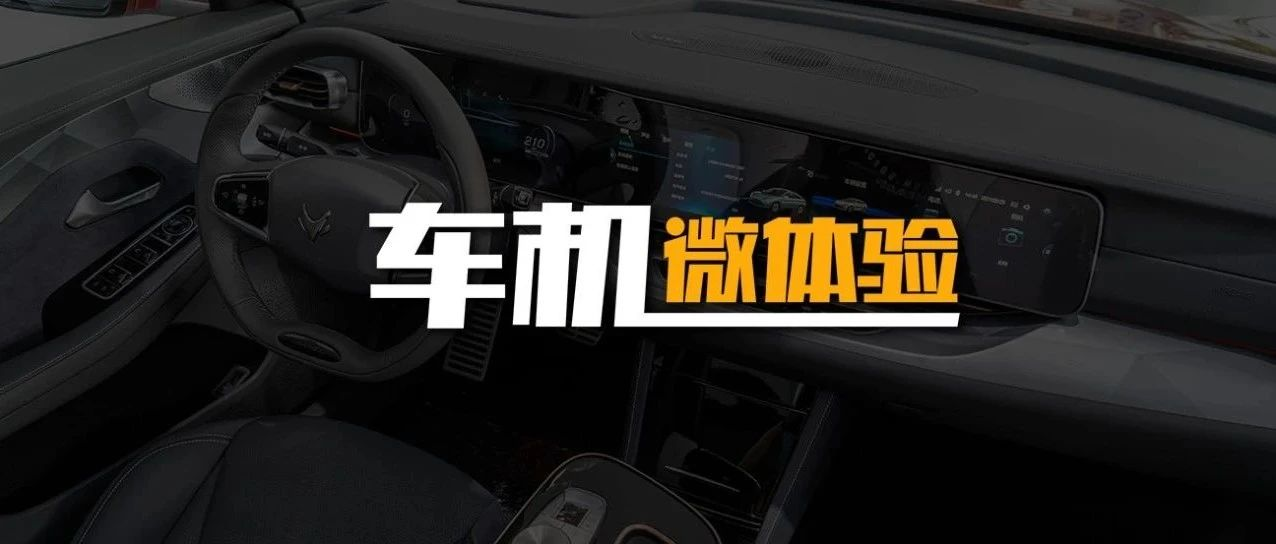Author: Master
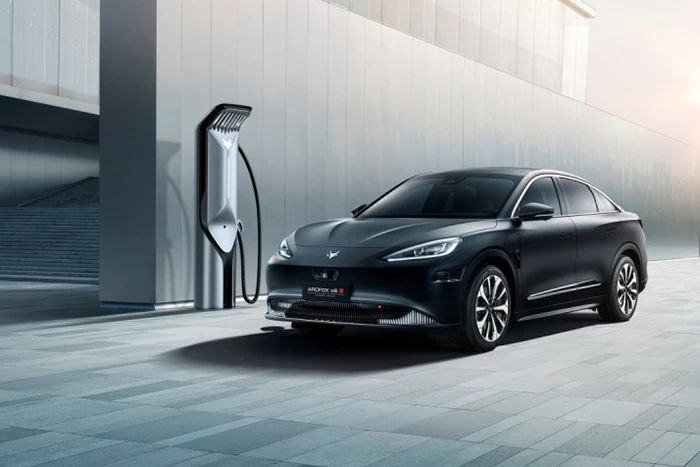
The era of “software-defined cars” has arrived. Here, “software” not only refers to driving assistance software, but also includes the “software” of in-car intelligent cabins and car machines. Therefore, we launched the smart car machine special program “In-Car Micro Experience”. In each issue, we will select a car machine product with distinctive features for evaluation and testing, and give it a score.
This time we will talk about the Hycan Alpha S, which was quite popular some time ago. However, it should be noted that this is not the Huawei “Hi version” with the full suite of Huawei, but the more affordable regular version priced between RMB 251,900 – 281,900. Want to know how the car machine performs? Keep reading:
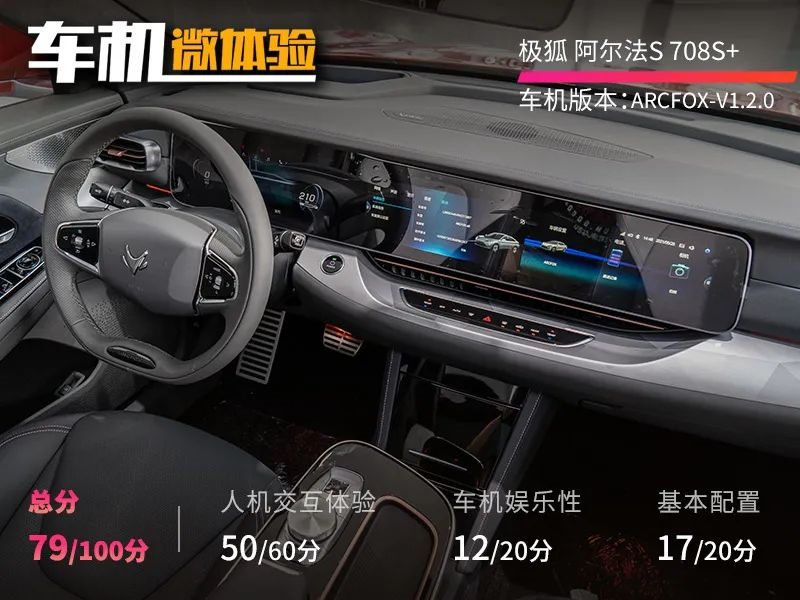
Whether it’s the regular version or the Huawei Hi version, the overall design of the Hycan Alpha S cabin is the same, with two screens including a 12.3-inch full LCD instrument panel and a multimedia widescreen (20.3 inches) that extends from the center console to the front of the passenger seat, integrating the control screen and the passenger entertainment screen into one.
High Basic Configuration
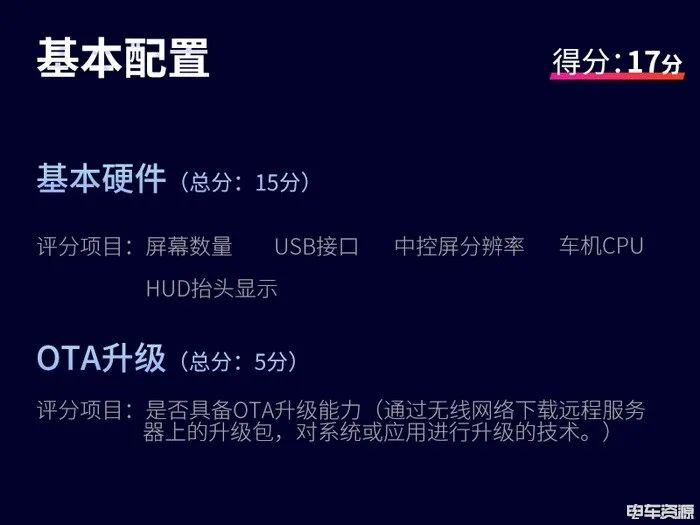
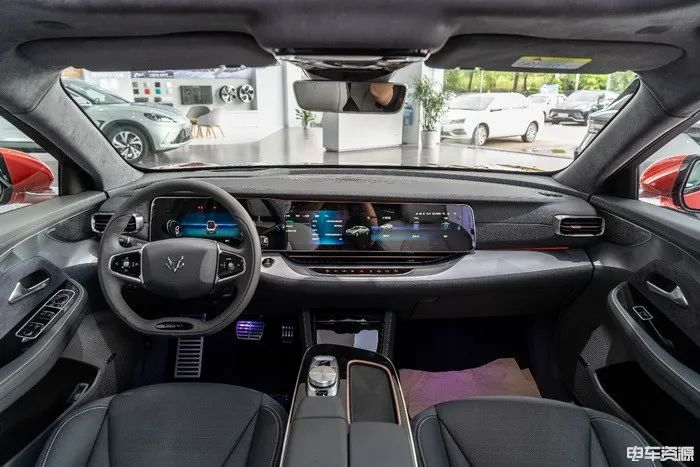
Without the blessing of the full suite of Huawei, the regular version of the Hycan Alpha S car machine chip set uses an Intel solution running on the Android system.
Screen One: Dashboard
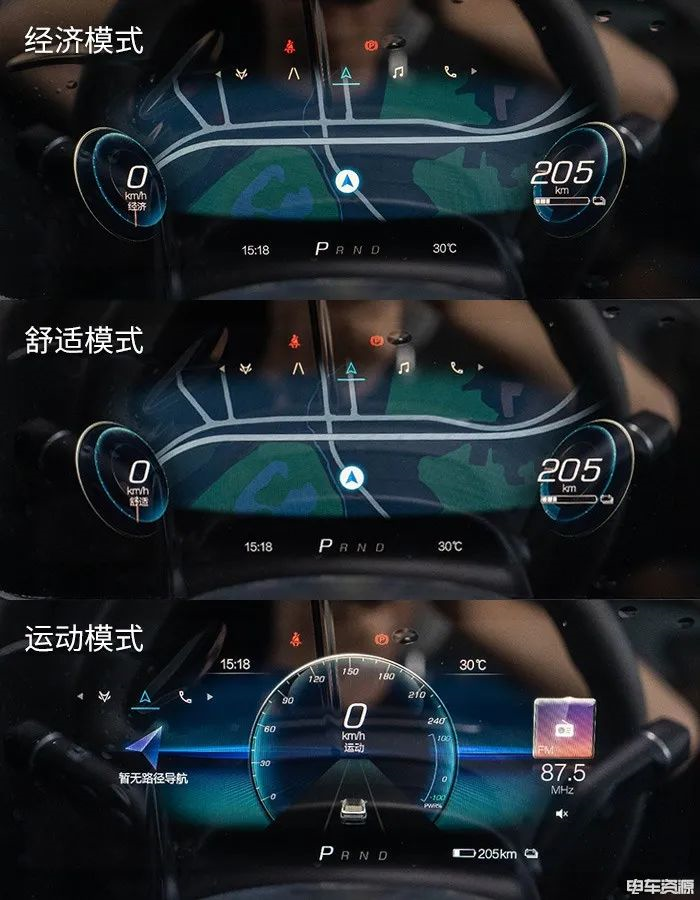
The dashboard has three modes and two themes. The design style of the economic/comfort mode is completely the same, and the navigation map and vehicle information are displayed in the center. The sport mode has a detailed speedometer, visual ADAS information, and power output in the center. It has everything you need, and the overall layout is also clear.
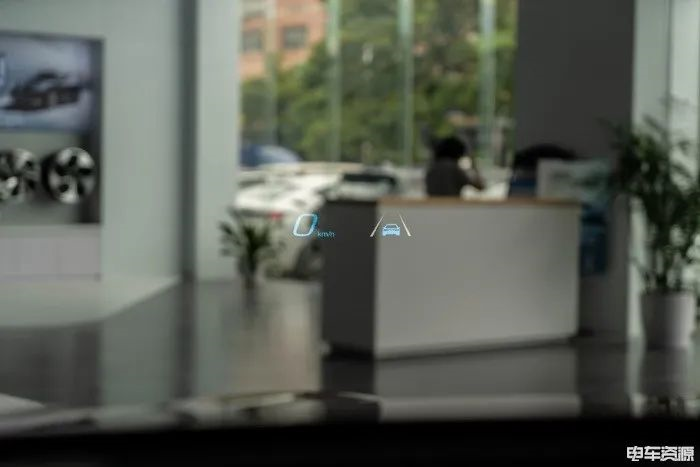 Translate:
Translate:
Except for the base 525S version, all models are equipped with a HUD head-up display as standard, which can display simple information such as speed, navigation, and ADAS.
Screen 2: Multimedia Screen
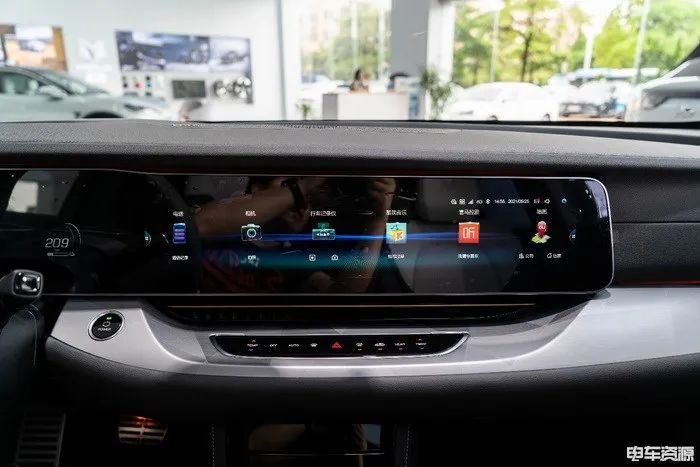
The 20.3-inch multimedia central control screen has a resolution of 3840×720 and a pixel density of 180 PPI, which is quite mainstream. Commonly used air conditioning switches, temperature, glass heating, and internal/external circulation are designed with independent touch buttons at the bottom. You can also swipe up from the bottom of the screen to enter a more detailed air conditioning menu.
In addition, the entire car also has 4 USB ports and 1 wireless charging pad, which is enough for 5 people to charge at the same time.
Human-Car Interaction Experience: Multi-level Menus
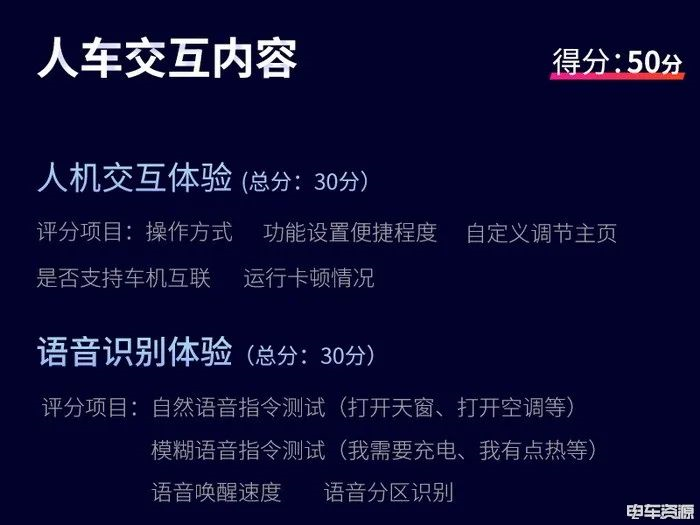
There are four interaction modes for this multimedia screen: touch screen, voice interaction, multifunctional buttons on the steering wheel, and rotary buttons on the center console. (The current version of the JiHu Alpha S car system software is 1.2.0)
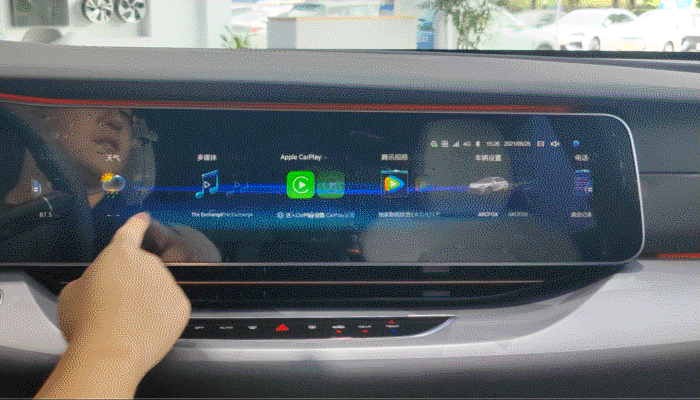
The main page can support up to 12 horizontally arranged APPs (up to 6 can be displayed at the same time), which can be freely set without pagination. The design is circular sliding.
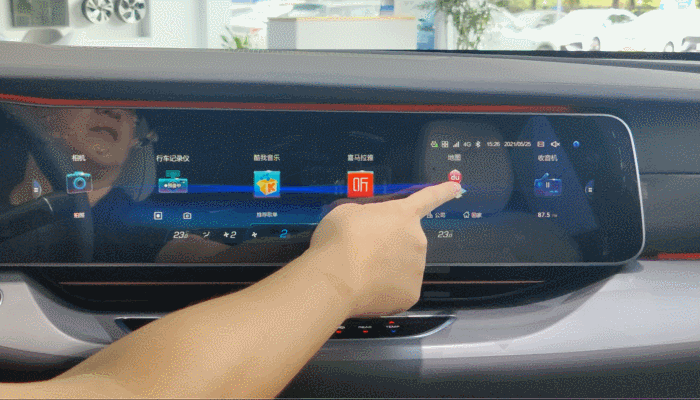
When an APP is opened, it defaults to occupying half of the screen. If you click on the left side, it will be displayed on the left side by default, and vice versa. The “screen projection” effect can be achieved by two-finger swiping, and you can also click on the expansion key on the edge of the APP page to switch to full-screen display.
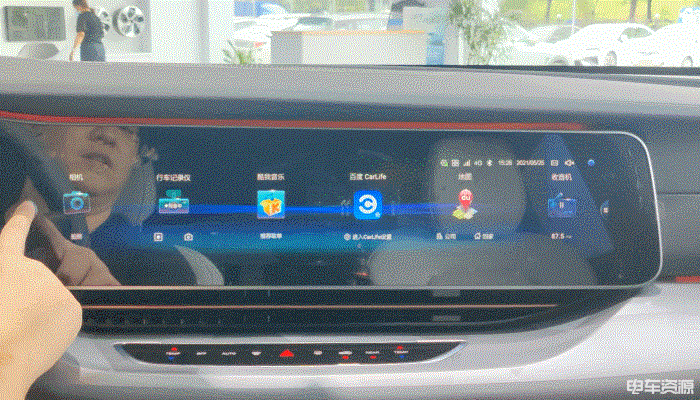
Clicking the small buttons on the left and right sides of the screen will enter the detailed secondary menu. There is no dedicated control screen for JiHu Alpha S like JiHu Alpha T. All detailed vehicle settings, system settings, etc. are integrated here.
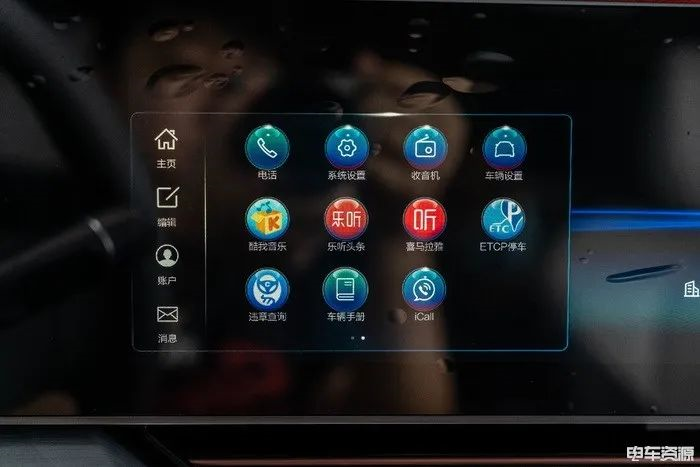 The overall operation logic is easy to understand. To achieve faster operation, the car settings button can be placed on the homepage for direct access. However, the font displayed is not very large, and the icons are not designed in a concise “flat” style. An OTA update could improve the user experience.
The overall operation logic is easy to understand. To achieve faster operation, the car settings button can be placed on the homepage for direct access. However, the font displayed is not very large, and the icons are not designed in a concise “flat” style. An OTA update could improve the user experience.
Apple iPhone users will be happy to know that the current version of the JIHU Alpha S supports wireless Apple CarPlay. However, navigation information cannot be displayed on the instrument panel or HUD. We recommend using a combination of a mobile music app and the car’s Baidu navigation.
The JIHU Alpha S also supports wireless Baidu CarLife, so Android users are not left out.
In our tests, the JIHU Alpha S experienced occasional lag when opening multiple apps, but overall performance was satisfactory.
The intelligent voice system of the JIHU Alpha S supports custom wake-up words, enabling users to speak commands without waiting for a response. The system can control the sunroof, air conditioning, navigation, multimedia, and more. It also supports partition identification for the driver and front-seat passenger to prevent errors when multiple people are in the car.
The voice control feature does not support wake-up duration settings. However, it does support many non-wake-up commands. If users are concerned about accidental operations, they can manually disable the feature.
We conducted 25 tests using natural language and fuzzy language commands. In natural language scenarios, the system identified and completed the operation each time. In fuzzy language scenarios, it only failed to recognize the command four times. The average time for the system to recognize and respond to voice commands was 1.87 seconds. We experienced two instances of lag and re-wake-up during testing. Overall, the JIHU Alpha S’s intelligent voice system is impressive.
The car’s entertainment system fulfills basic needs with its apps.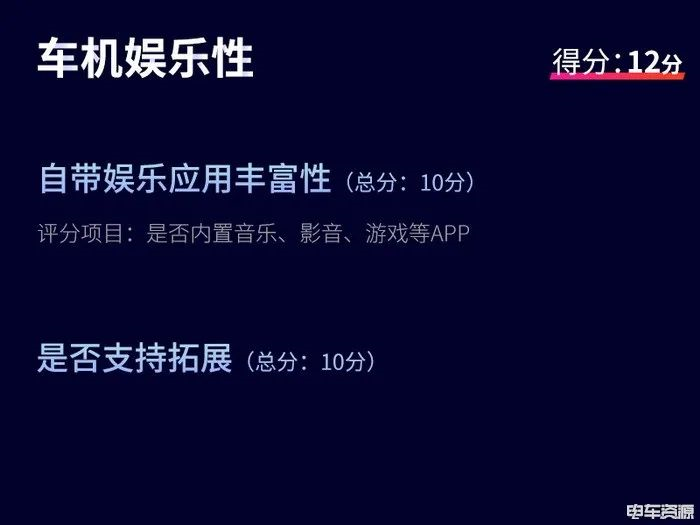
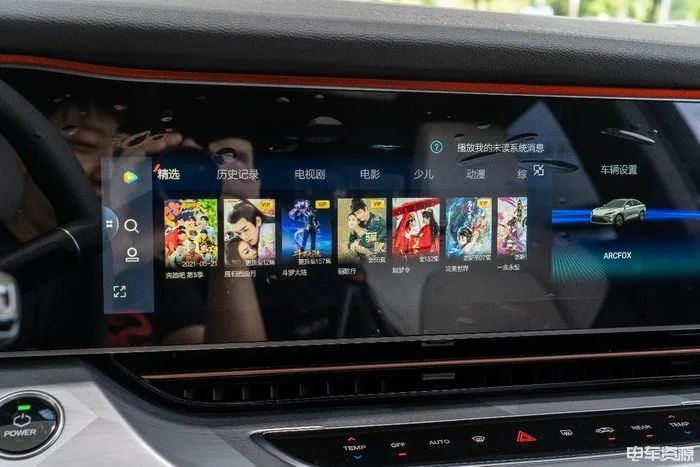
The system comes with Kuwo Music, Ximalaya, Leting Headlines and Tencent Video built-in, so there is no problem meeting basic entertainment needs. It supports the app store, but currently the number of apps available is small. We look forward to JIHU continuing to enrich and improve the content of the app store and introducing new functions.
Summary
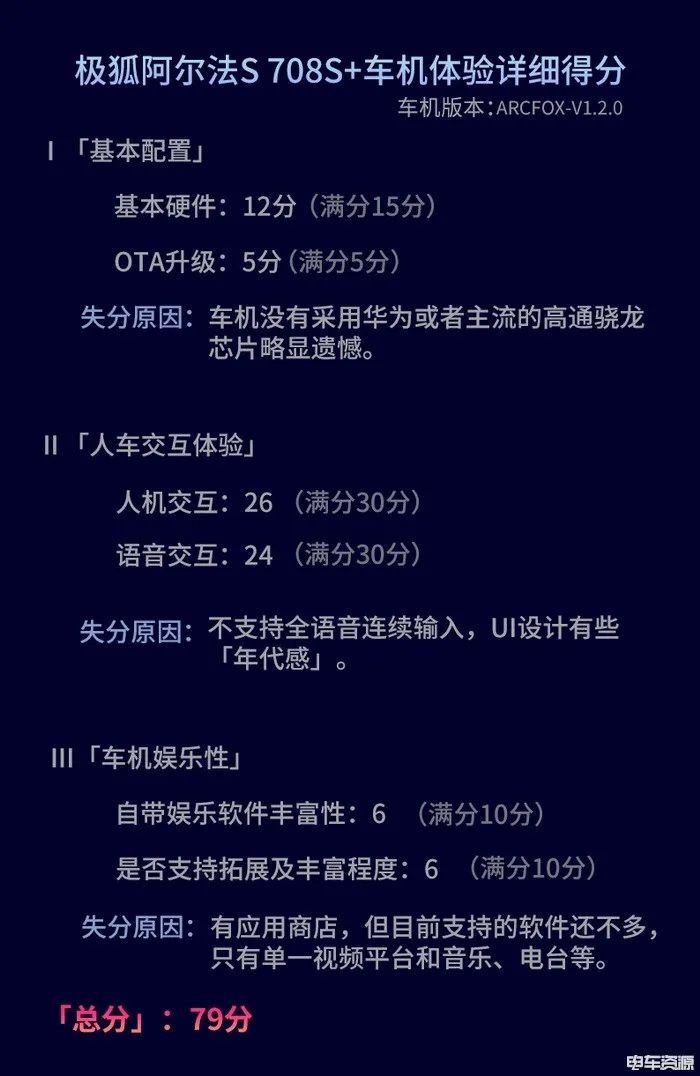
Overall, the JIHU Alpha S standard version car system still received a good score. Although it does not have the control-specific screen of the JIHU Alpha T, it still adds physical buttons for some commonly used functions and does not sacrifice practicality for the sake of excessive simplicity. However, there are still some issues, such as not using Huawei’s Kirin 990A chip like the Hi version, and the UI style lacking a sense of design. We hope that JIHU can continue to upgrade and improve its products through OTA updates in the future.
This article is a translation by ChatGPT of a Chinese report from 42HOW. If you have any questions about it, please email bd@42how.com.
